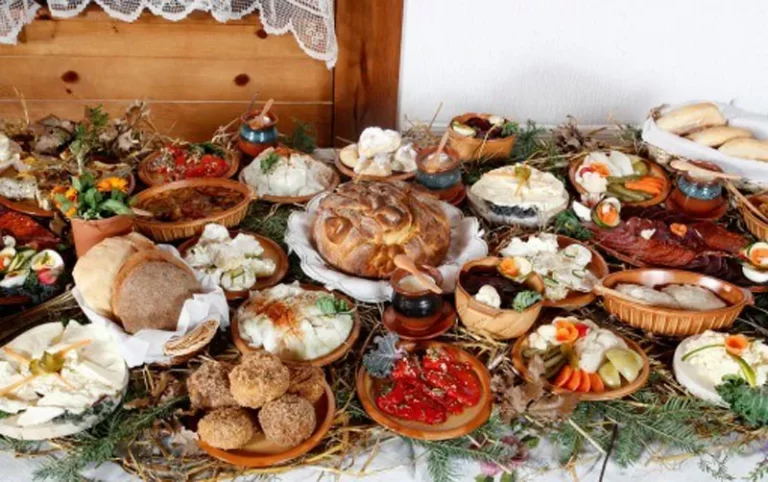Introduction: Serbian cuisine and its ingredients
Serbian cuisine is a reflection of the country’s history, geography, and cultural influences. It is a blend of Eastern and Western European flavors, with the influence of Ottoman and Austro-Hungarian cuisines. The cuisine is characterized by its hearty meat dishes, rich stews, and flavorful spices, with an emphasis on fresh and seasonal ingredients. In this article, we will explore the key ingredients used in Serbian dishes.
Meat and dairy: staples of Serbian cuisine
Meat and dairy are the foundation of Serbian cuisine. Beef, pork, lamb, and chicken are all commonly used. Grilled meats, such as cevapi (small sausages), pljeskavica (hamburger-like patties), and raznjici (skewered meat) are popular. Goulash, a rich meat stew, is another favorite. Dairy products such as kajmak (creamy cheese spread), feta cheese, and yogurt are widely used in Serbian cuisine. Kajmak is often served with grilled meats, while feta cheese is used in salads and other dishes.
Herbs and spices: flavoring Serbian dishes
Herbs and spices are used to add flavor and depth to Serbian dishes. Paprika is perhaps the most important spice, used in everything from stews to sausages. Other common herbs and spices include garlic, onion, bay leaves, thyme, rosemary, and parsley. Vegeta, a seasoning blend of salt, dehydrated vegetables, and spices, is also widely used in Serbian cooking.
Vegetables and fruits: essential ingredients
Fresh vegetables and fruits are essential ingredients in Serbian cuisine. Tomatoes, peppers, cucumbers, onions, and garlic are used in salads, stews, and other dishes. Ajvar, a roasted red pepper and eggplant spread, is a popular condiment. Fruits such as plums, apples, and berries are used in desserts, jams, and brandies.
Bread and pastry: traditional Serbian carbs
Bread and pastries are an important part of Serbian cuisine. Pogača, a round bread topped with salt and often filled with cheese, is a staple. Burek, a savory pastry filled with meat or cheese, is another popular dish. Kiflice, crescent-shaped rolls filled with cheese or jam, are a common breakfast item.
Beverages: what to drink with Serbian food
In Serbia, alcoholic beverages such as rakija (fruit brandy) and beer are often consumed alongside meals. Wine is also popular, with many local varieties available. Non-alcoholic beverages such as mineral water, juice, and tea are also common. Turkish coffee is a traditional way to end a meal in Serbia.
In conclusion, Serbian cuisine is a delicious blend of flavors and ingredients. Whether you’re a meat lover, vegetarian, or just looking to try something new, there is something for everyone in Serbian cuisine. By using fresh, seasonal ingredients and flavorful spices, Serbian dishes are sure to satisfy.

